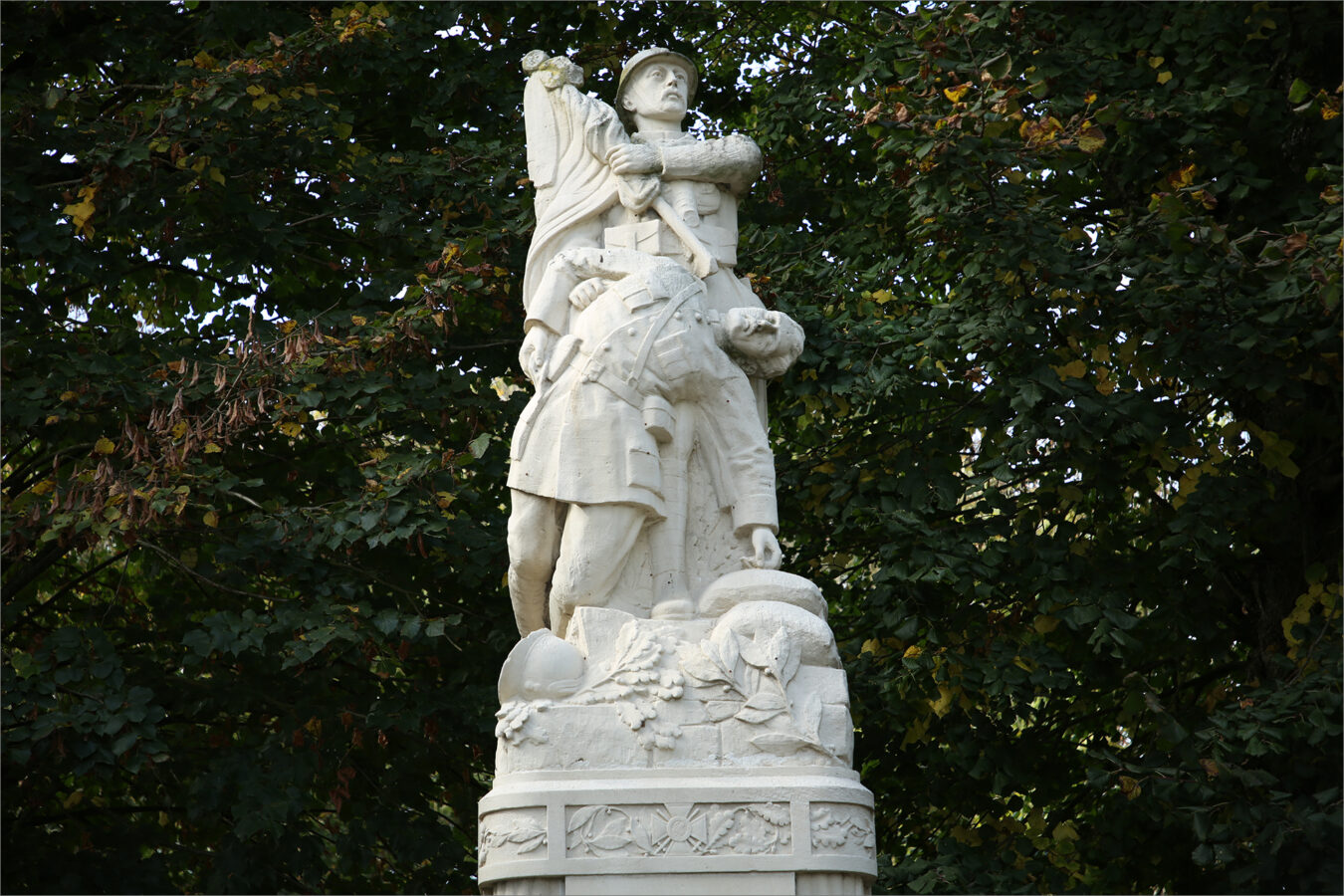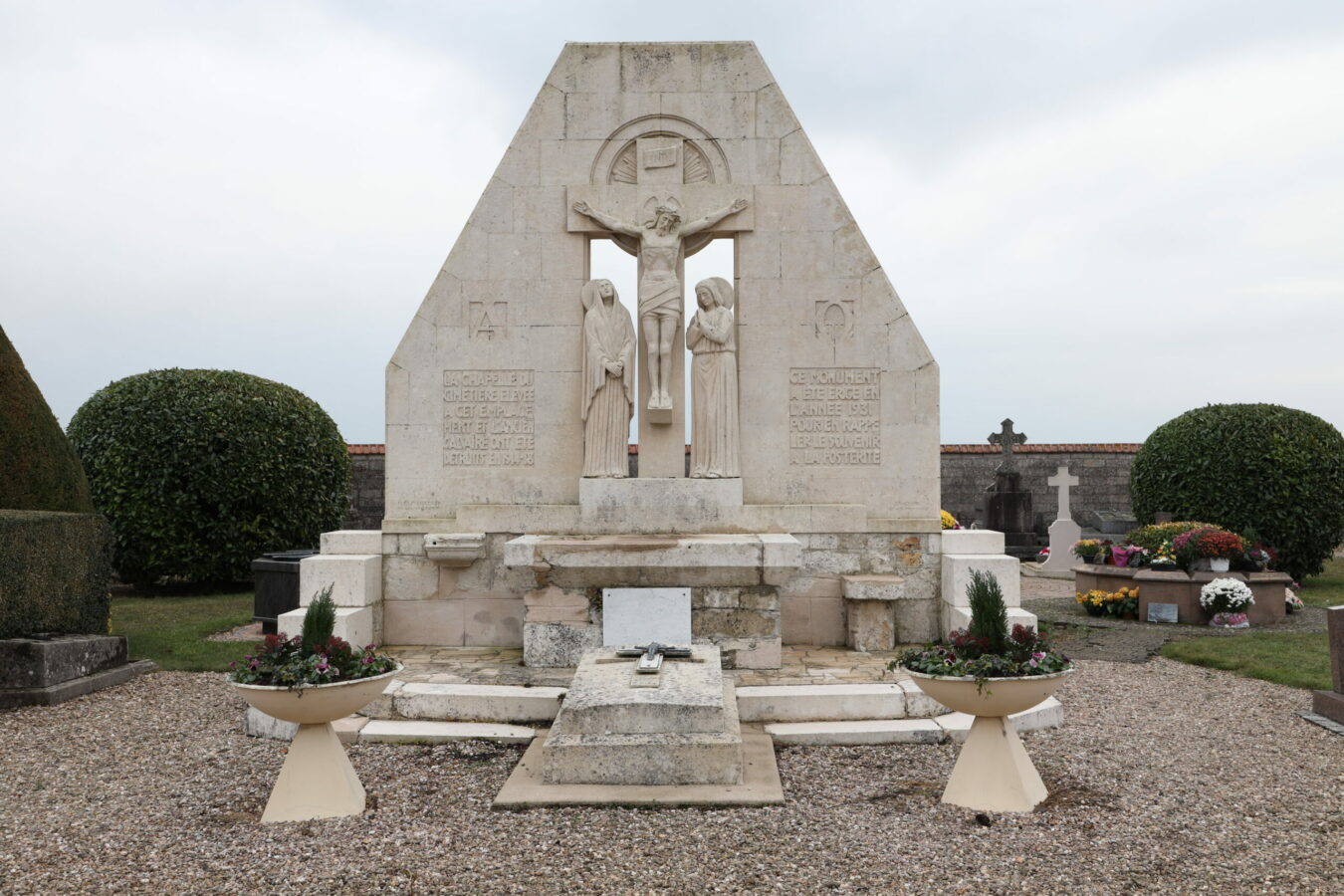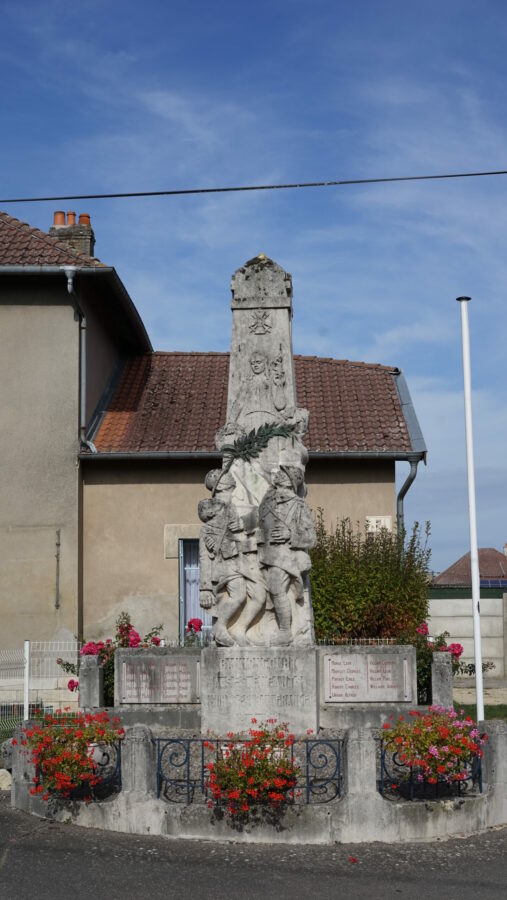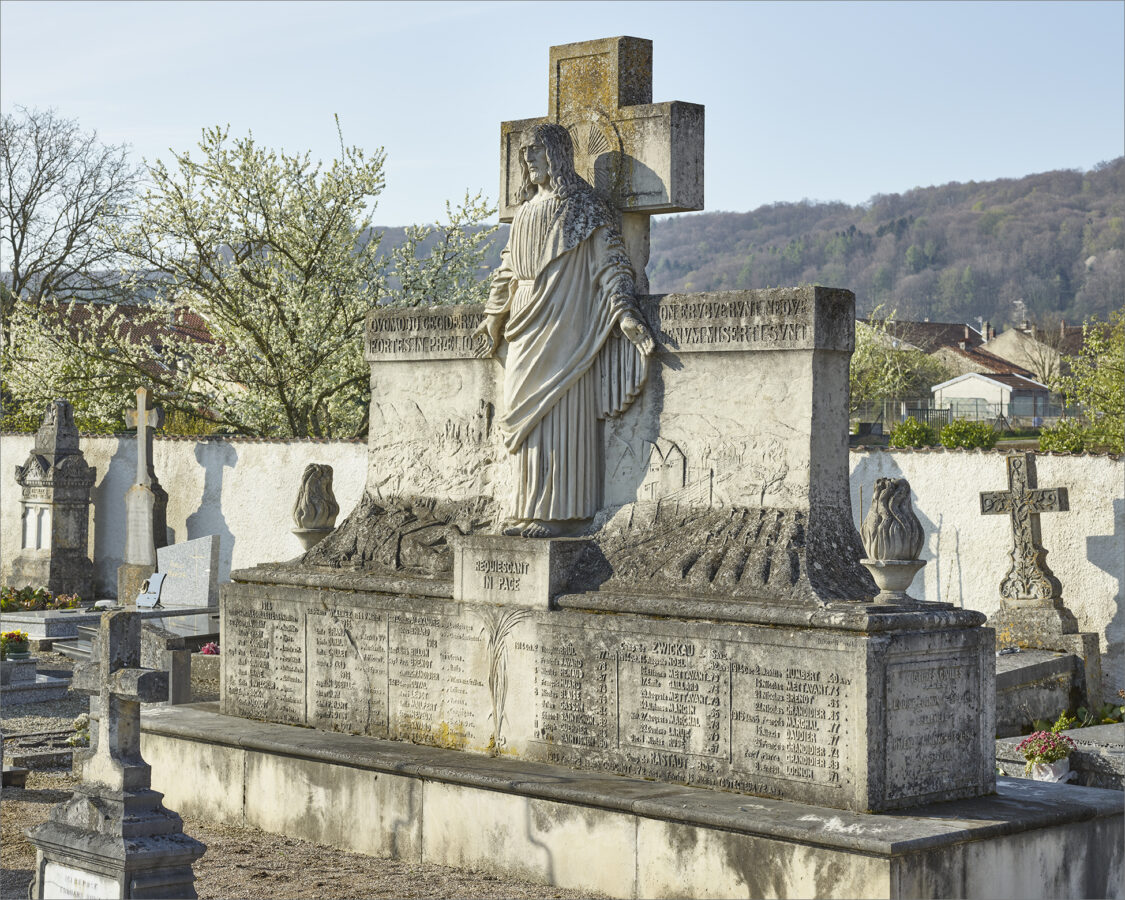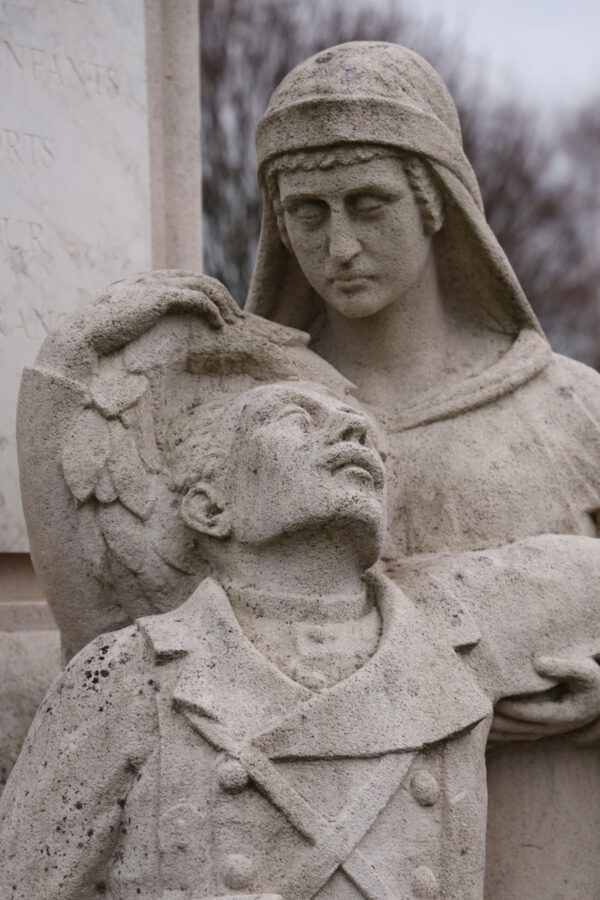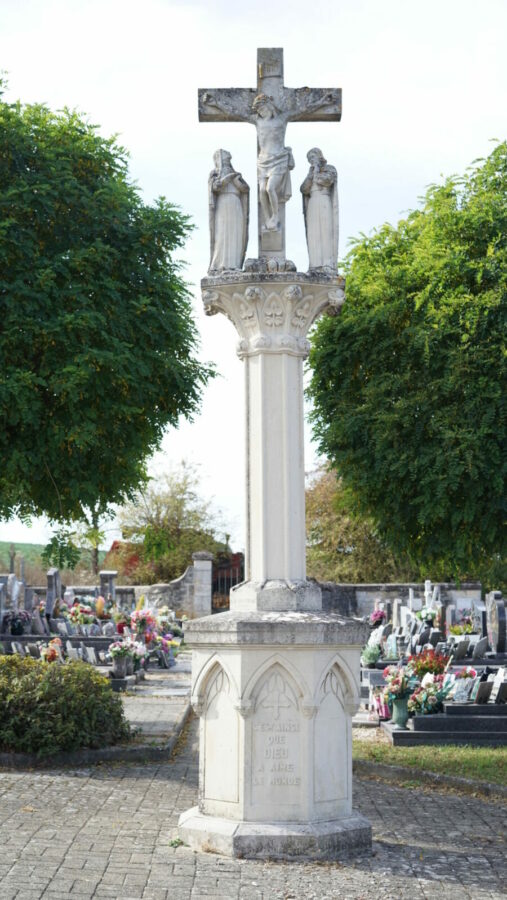Commemorative monuments
A skilled sculptor, Duilio Donzelli initially received many orders on account of this particular talent. He thus created commemorative monuments in the cemeteries and monuments to the dead on the squares of villages in the Meuse region. In 1925, the year when he settled in Lacroix-sur-Meuse, he received the order for the monument to the dead from the commune. The artist produced a remarkable piece of work here which combines an allegorical representation of Victory with a realistic depiction of the suffering caused by the war. In the foreground, a dead soldier is supported by one of his comrades. A crowd of figures may be seen around the pyramid: a peasant with his horse, a widow, parents with their son, a blacksmith and an artist, Donzelli himself. The latter also sculpted the monuments to the dead of Woël (1926), Bannoncourt (1927), Thillot (1928-1929), Mesnil-sous-les-Côtes and Chaillon (1930), Récourt-le-Creux (1932) and Bonzée (1933).
In most cases, soldiers are shown, dead or alive. Mourning is a very prominent theme. On the Woël monument, a woman and a child lay flowers close to the remains of a French infantryman, while in Chaillon, a tomb replaces the dead man. Sometimes, living soldiers are shown supporting a dead comrade (Bannoncourt, Mesnil-sous-les-Côtes, Récourt-le-Creux). Finally, allegories convey the horror and suffering: France in Thillot-sous-les-Côtes, Victory in Bannoncourt. Sometimes the motifs are the same: the Croix de Guerre and the cross of Loraine, laurel and oak leaves, palm branches, flowers.
In parallel with this work, Donzelli sculped commemorative monuments in cemeteries (Hannonville-sous-les-Côtes, Fresnes-en-Woëvre, Ancemont). The wayside crosses of Ancemont and Fresnes examine the theme of Christ’s suffering on the cross. The Fresnes monument was erected on the site of the cemetery chapel, which was destroyed during the war. In Hannonville, Christ is shown resurrected, with his arms open to welcome the civilian and military victims of the war. The latter appear on the bas-reliefs that show a prison camp and a battlefield.
All of these monuments display an aesthetic style that combines realism with attention to detail in the costumes, idealisation, through the portrayal of death that is a long way from the horror that was experienced, and exaltation of the Homeland through the use of the allegories.

